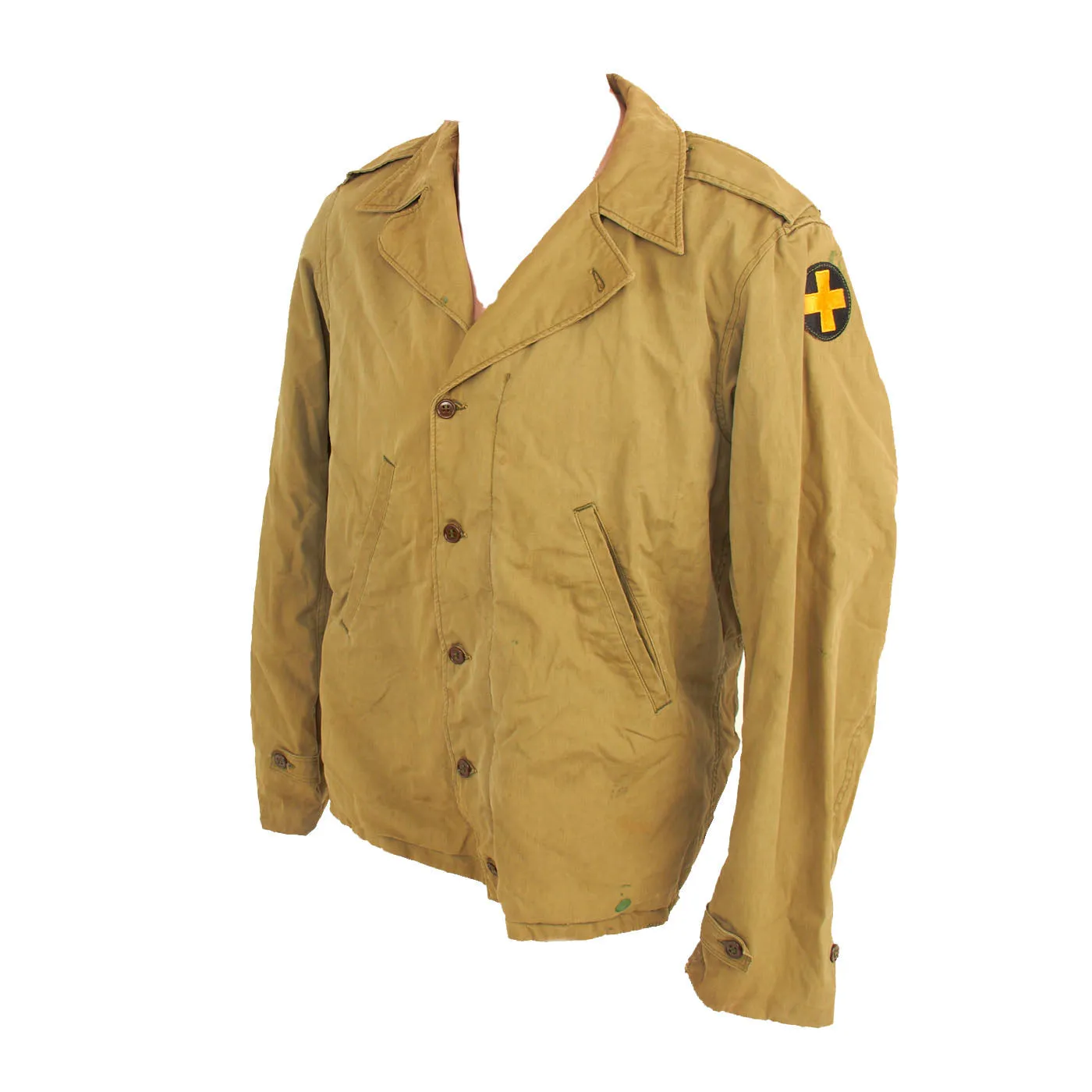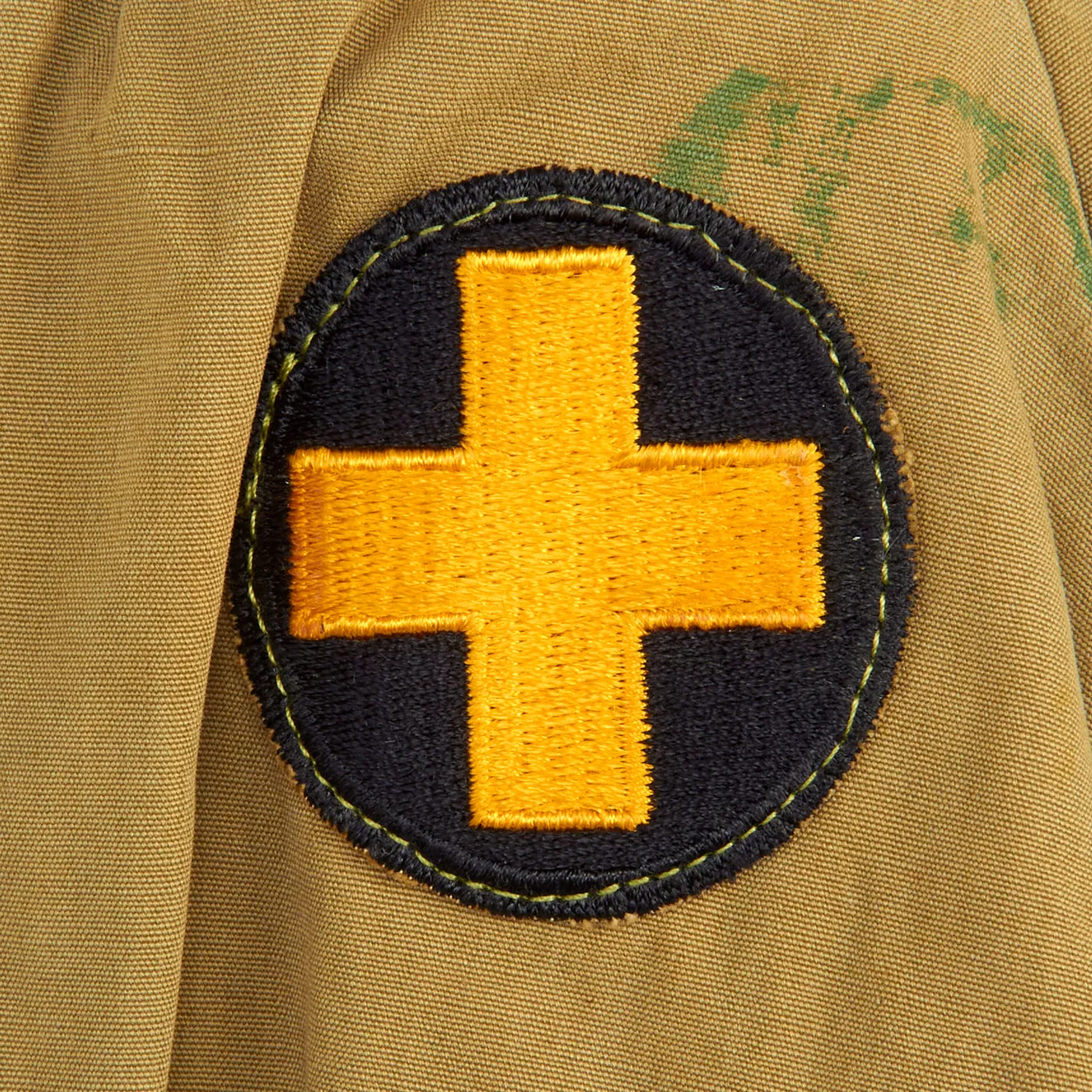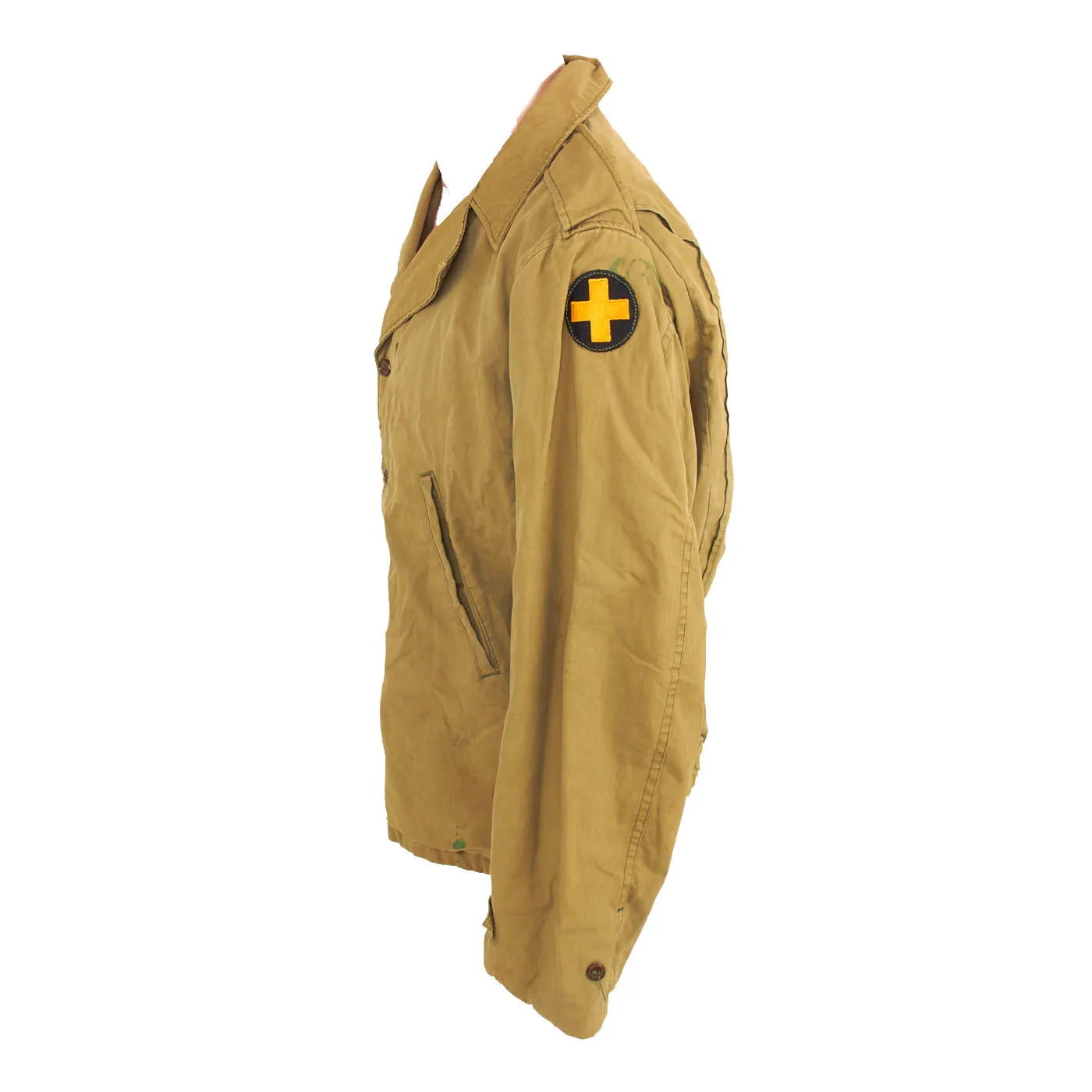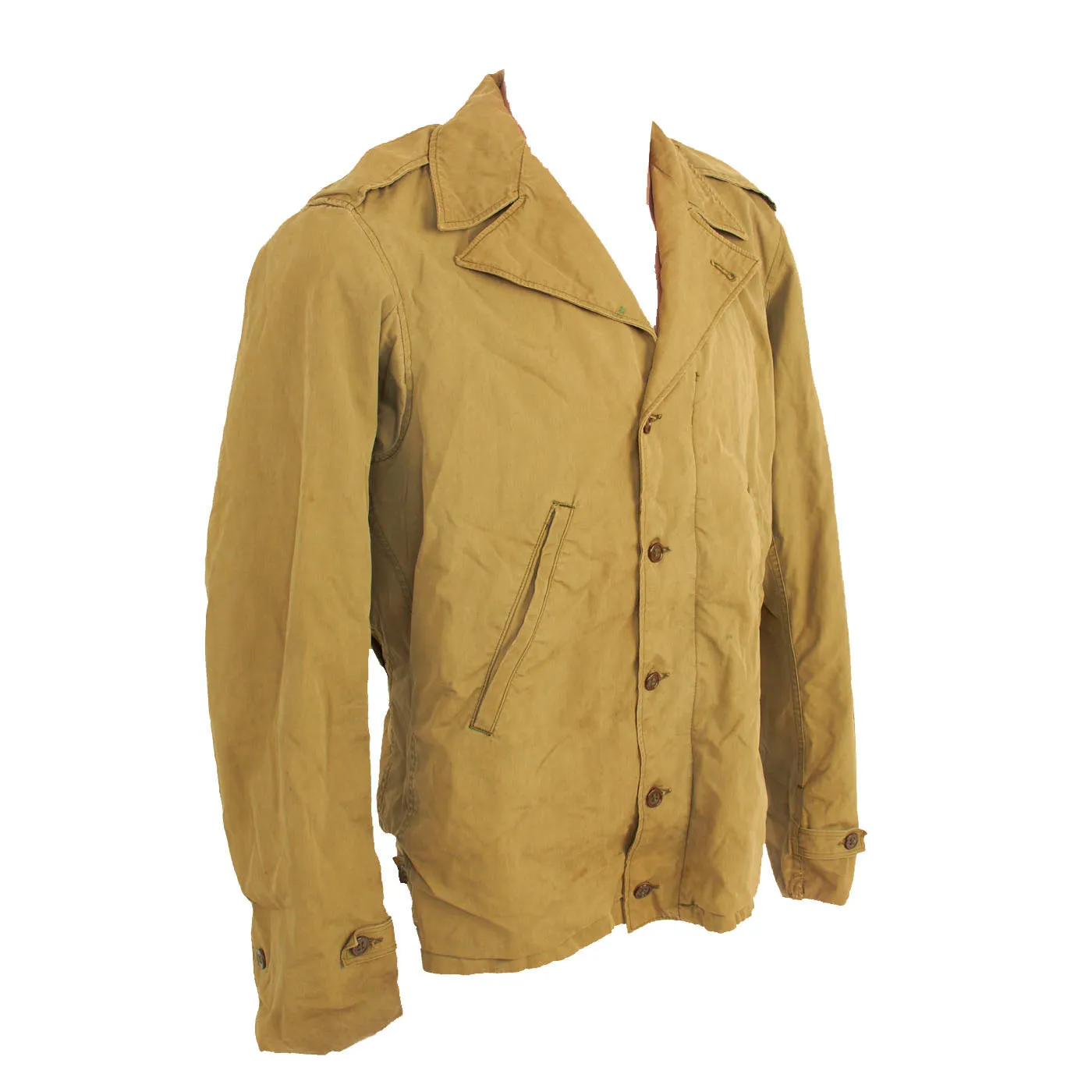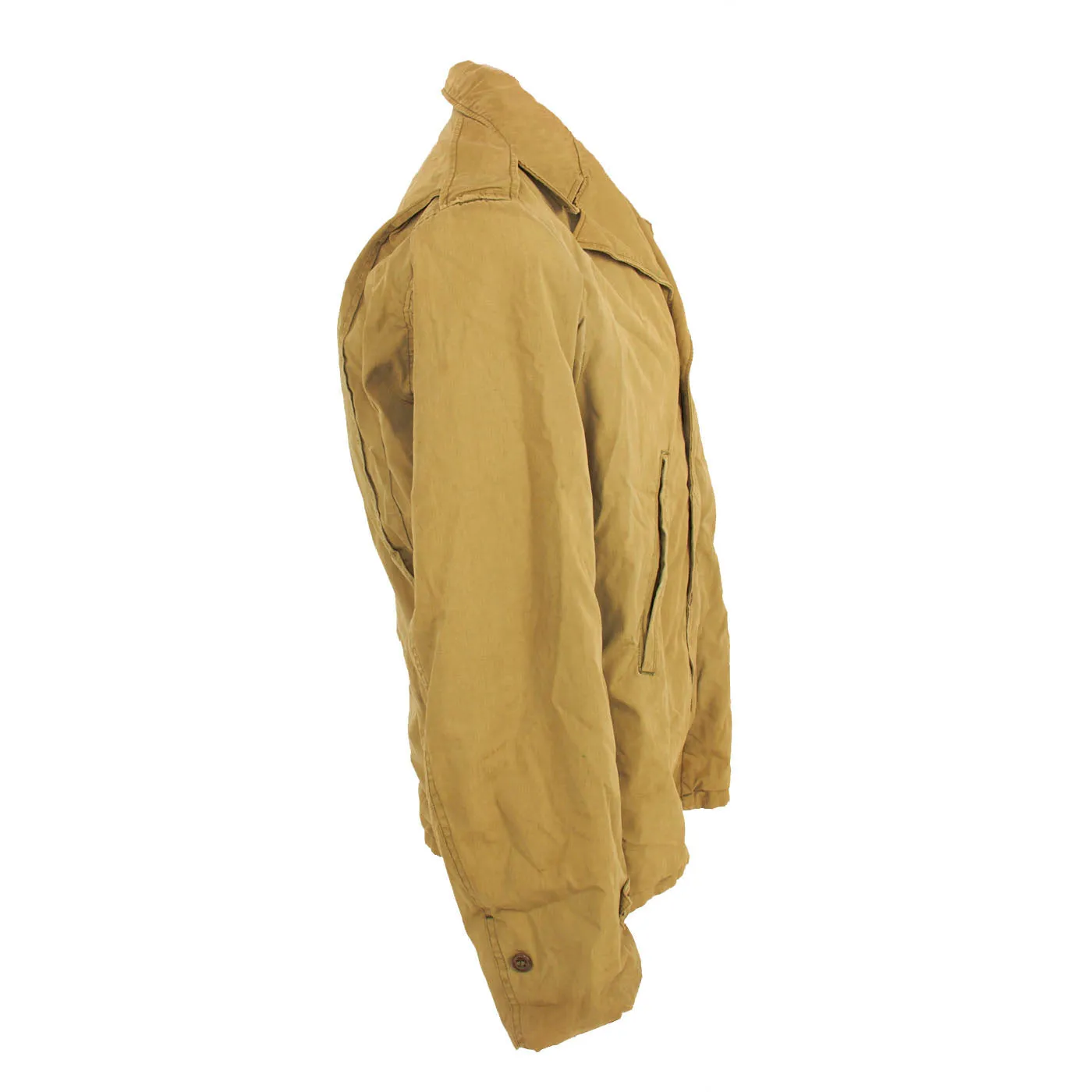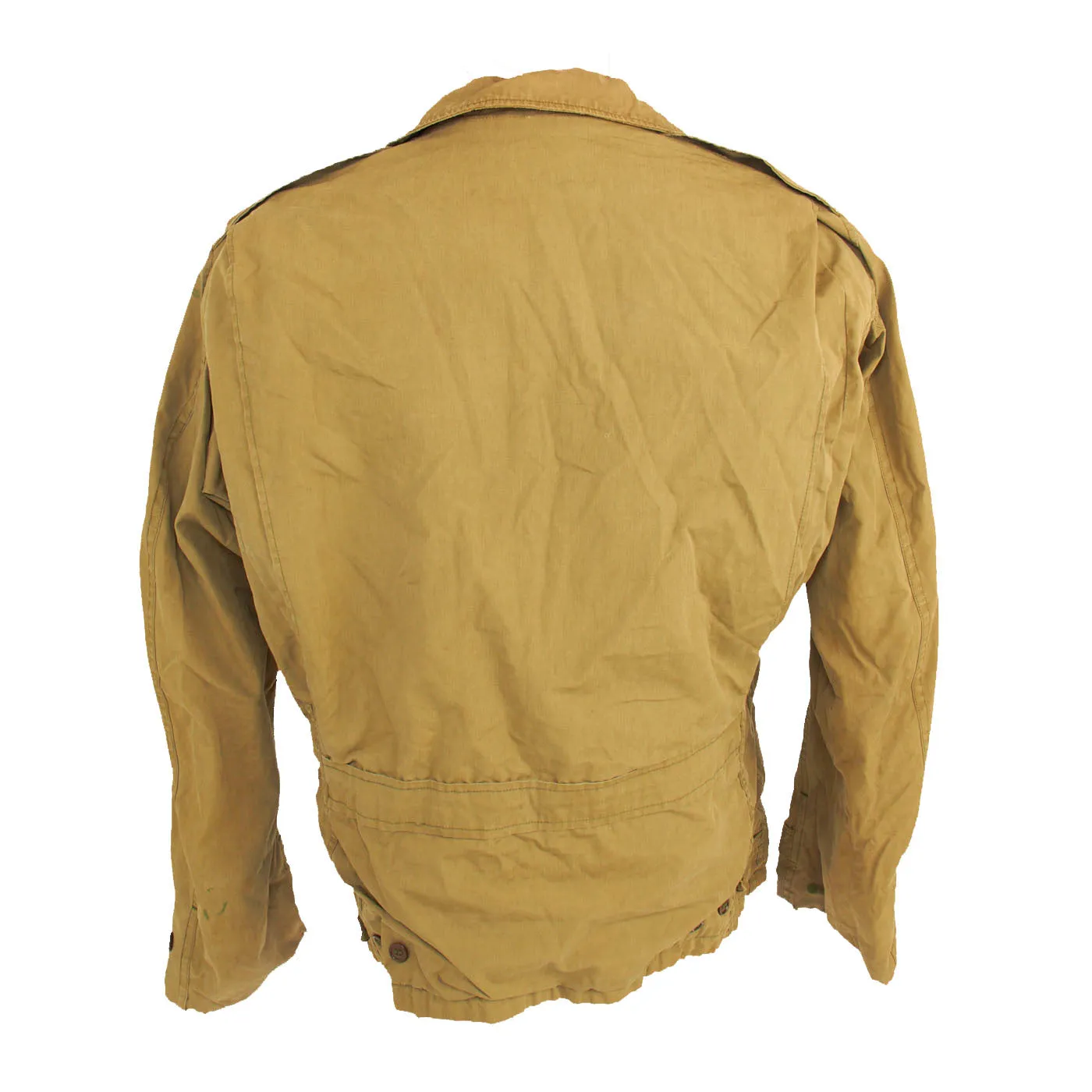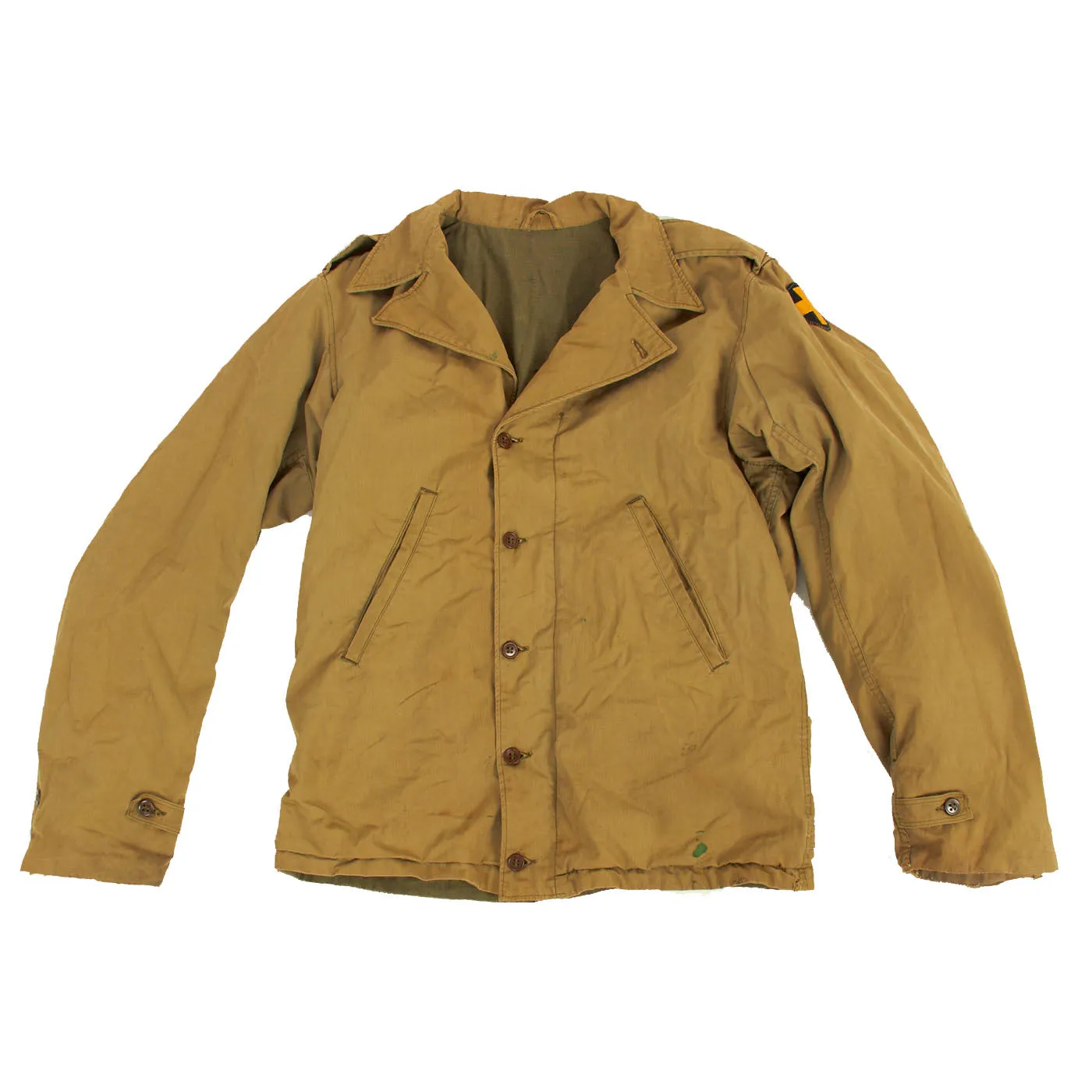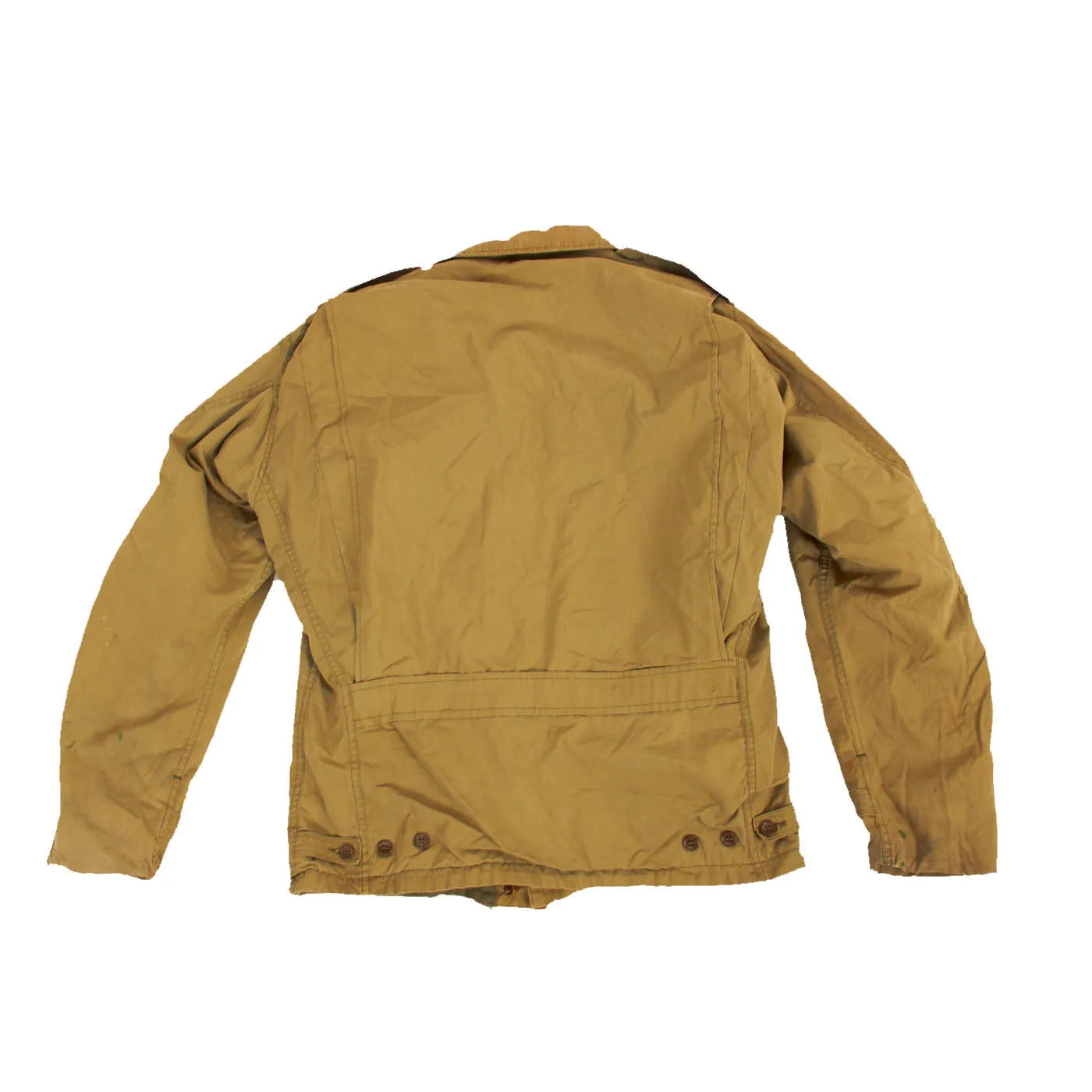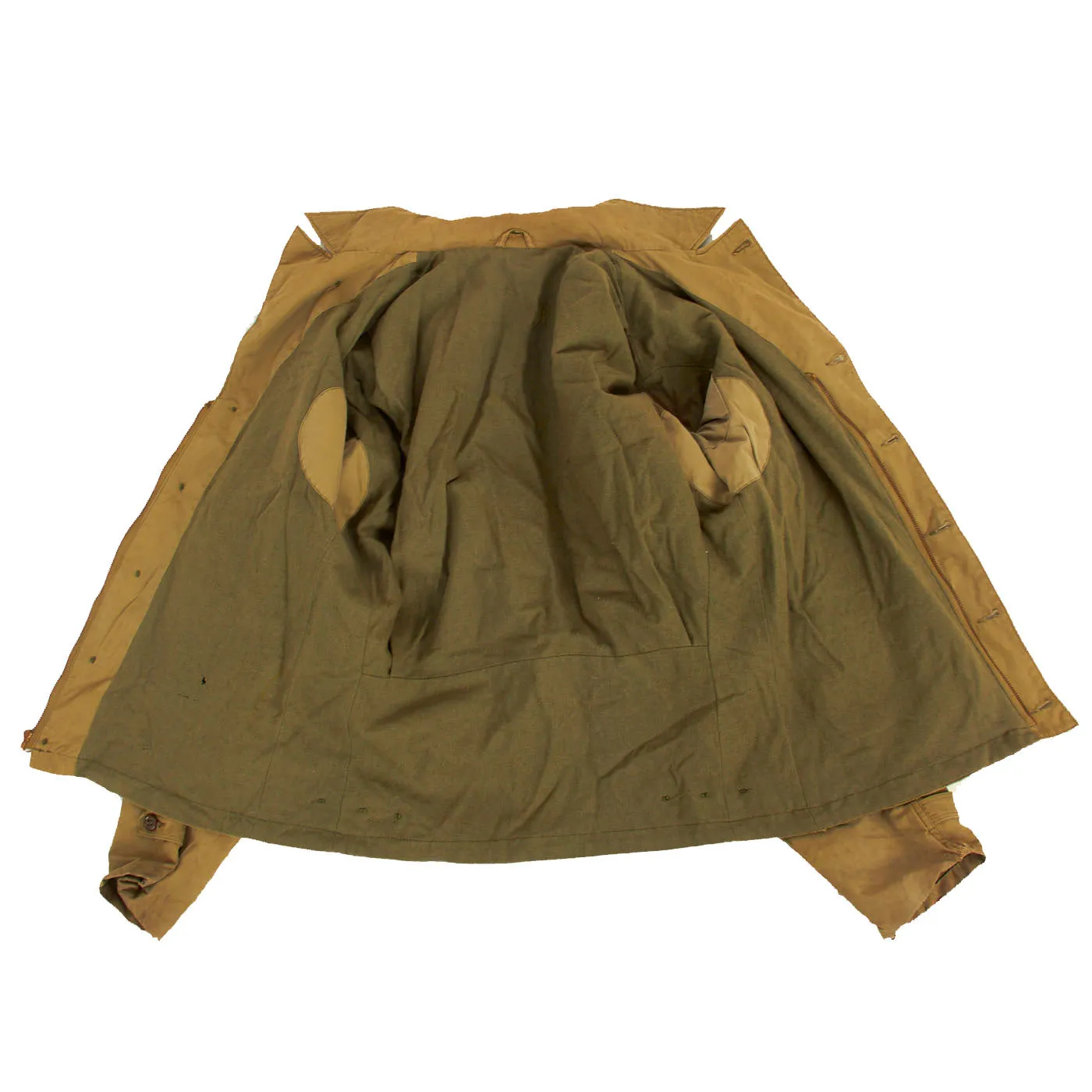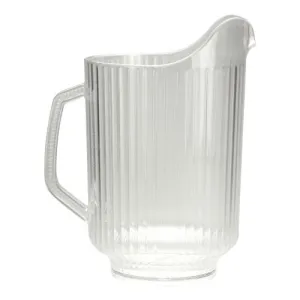Original Item: Only One Available. This is a lovely example of a “Jacket, Field, O.D.” which features a vibrant 33rd Infantry Division insignia on the left shoulder. The 33rd Infantry Division was a formation of the U.S. Army National Guard between 1917 and 1968. Originally formed for service during World War I, the division fought along the Western Front during the Battle of Amiens, the Battle of Hamel, the Meuse-Argonne Offensive, at the Second Battle of the Somme, and at the Battle of Saint-Mihiel. It was re-formed during the inter-war period, and then later activated for service during World War II, seeing action against the Imperial Japanese Army in the Pacific. In the post war era, the division was reconstituted as an all-Illinois National Guard division. In the late 1960s, the division was reduced to a brigade-sized formation, and its lineage is currently perpetuated by the 33rd Infantry Brigade Combat Team.
The Jacket, Field, O.D. (also unofficially known as O.D. Cotton Field Jacket, Parsons Jacket, or M1941) is a field jacket that was used by US Army soldiers, most famously during the beginning of World War II. In 1941 it started to be phased in as a replacement for the wool four-pocket service coat of World War I, but around 1943 it was replaced in turn by the improved M1943 model. Owing to wide adoption, the M1941 is usually recognized as a symbol of the World War II American G.I. The jacket was made in a light shade of olive drab called O.D. number 2.
This example is in wonderful, moderately used condition without any extensive damage or wear present. There is minor staining to the exterior, but that just adds to the beauty of it!
Comes more than ready for display.
The division, along with the other National Guard divisions with the exception of the 27th, was ordered to convert from the square to the triangular formation between January and February 1942. The 108th Engineers (Combat) Regiment was broken up on 12 February 1942 and the HQ, HQ and Service Company, and Companies A, B, and C became the 108th Engineer Combat Battalion, which remained with the division. The HQ, 1st Battalion was inactivated on 21 February 1942 and the 2nd Battalion became the 181st Battalion (Heavy Pontoon), an engineering unit.
The 132nd Infantry Regiment was detached on 14 January 1942 for service in New Caledonia with the Americal Division task force. On 21 February 1942 the division was re-designated the 33rd Infantry Division. That same day the 131st Infantry Regiment was detached for non-divisional service in the continental United States. The 129th Infantry Regiment was detached on 31 July 1943, and was later assigned to the 37th Infantry Division. The 136th Infantry Regiment, originally a Minnesota National Guard unit inactive during the interwar period, was reconstituted in the Army of the United States, activated with personnel transferred from elsewhere in the 33rd Infantry Division, and assigned to the division on 1 April 1942. The 123rd Infantry Regiment (unrelated in lineage to an earlier Alabama National Guard formation of the same designation that saw service in World War I as a part of the 31st Division) was constituted in the Army of the United States on 24 August 1942 and assigned to the division on 28 September 1942. The division served in the south Pacific, fighting in New Guinea and in the Philippines.
During its combat operations, divisions usually had various units attached in support of it and other organic units detached. Where those attachments and detachments are well-documented for the divisions that fought in the European Theater of Operations, documentation is poorer for those divisions which fought in the Pacific.




